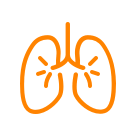common diseases
in cats

All species have a particular tendency to suffer certain pathologies and not others. And cats, by their very nature as cats, are no different. The list of possible and frequently-occurring diseases that may arise if the conditions for a certain disease are met is long.
So what is this list of general and frequently-occurring feline diseases?
ALLERGIES
The first step will be to identify the allergen and eliminate it from the animal’s surroundings. The symptoms of allergy can be respiratory (cough, sneezing, difficulty breathing) and of the skin (intense and persistent itching and watery eyes).
Bronchial pneumonia
Bronchial pneumonia is an acute inflammation of the bronchi and the pulmonary alveoli. You will notice that your cat has weeping eyes, mucus, a cough and even mouth ulcers.
CAT FLU
The most common respiratory disease is cat flu (RVF), caused by a herpesvirus. Symptoms tend to include watery eyes, coughing and sneezing, nasal congestion and thick mucus. Your vet will prescribe antibiotics for the cat, which you will have to administer until the end of the treatment as indicated by the vet, although you will soon see symptoms improving.
CATARACTS
In the eyes, cataracts (clouding of the lens); you will notice that the inside of the pupil is white. Although you may also detect it if you see your cat knocking into furniture or avoiding climbing to high places. The only solution is surgical intervention.
Inflammations
Stomatisis, which is an inflammation of the oral mucosa and the gums. It is usually triggered by the presence of tartar and it can affect the palate, the tongue or the gums.
Pharyngitis: your cat will show signs of difficulty swallowing, a cough, fever, tiredness and lack of appetite.
Otitis, which is an inflammatory process in the ear canal. It can have very serious consequences because, if not cured in time, it can lead to perforation of the eardrum.
kidney failure
From a certain age, kidney failure is very common. Cats’ kidneys carry out an intense filtering task. Suspect this problem if your cat is eating less, becoming thinner, and greatly increasing the amount of water that it drinks and urine that it passes.
Hypertrophic cardiomyopathy
The symptoms can be subtle, but the cat will generally lose weight, be more tired or passive, and present respiratory problems.











